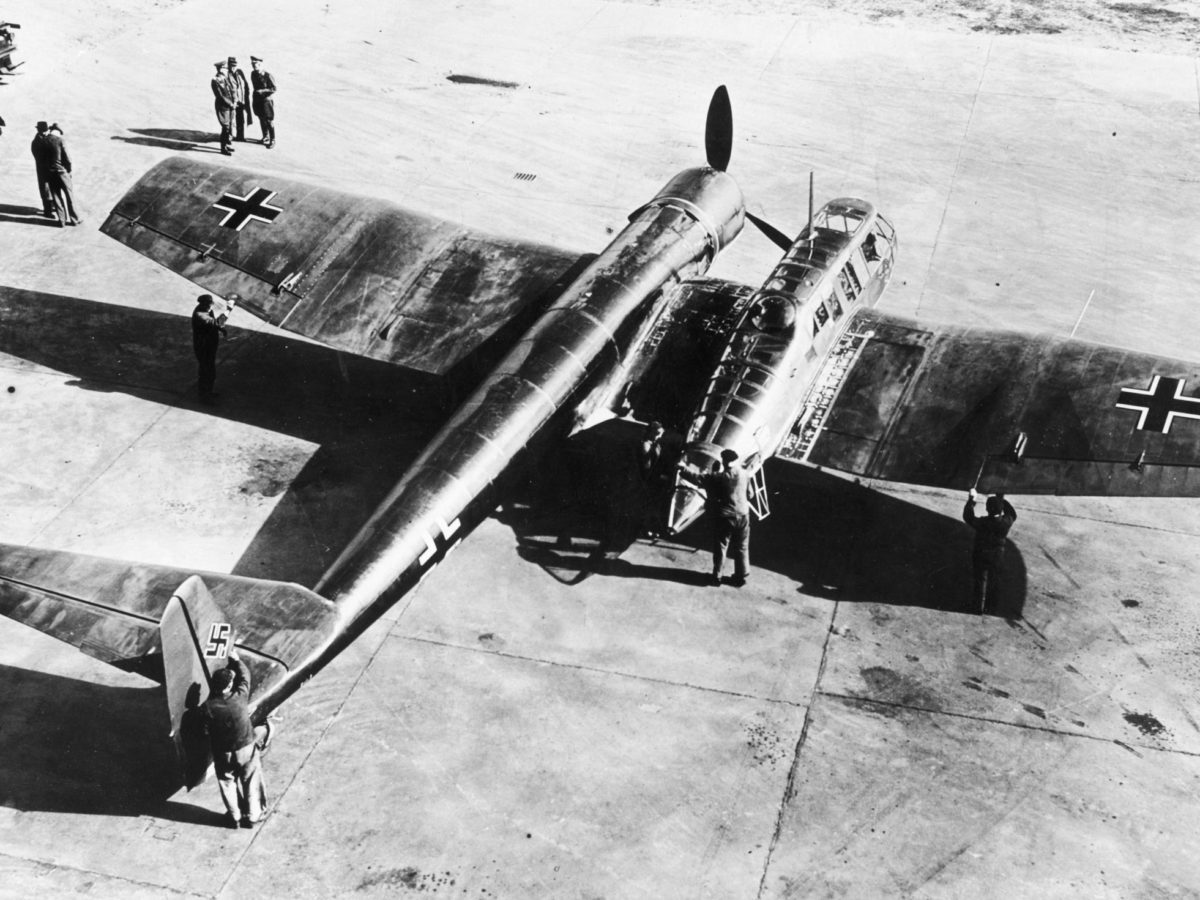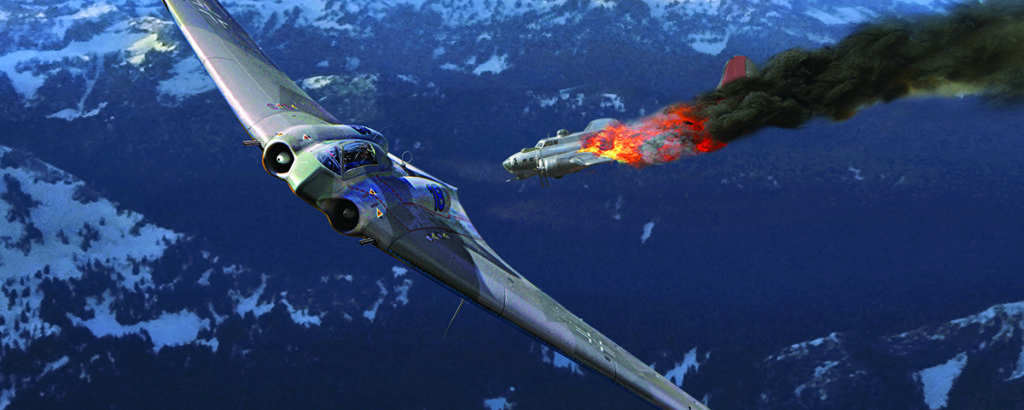There are many reasons why less than first-rate aircraft are produced in quantity. The most dominant factor is the perceived urgency of the need. If war is threatening, or if an existing conflict is not going well, governments are more willing to take risks. Sometimes hubris also figures in. A government official might give the nod to a company with a good track record without fully evaluating the design being submitted. And there’s always the question of timing. An aircraft that was a good choice when contracts were first let might be overtaken by technological advances or other developments. The unfortunate result for pilots, especially in combat, can be a fatally flawed airplane. What follows are our picks for seven not-so-magnificent planes that for a variety of reasons never should have made it off the drawing boards.
Messerschmitt Me-210
The same Luftwaffe that used the vaunted Me-109, Fw-190 and Me-262 to such deadly effect in World War II was also responsible for a hefty portfolio of bad airplanes. In fact, this article could be composed almost entirely of Luftwaffe types, but to be fair only two are included, as there are plenty from other countries to choose from.
Although it was Hermann Göring’s pet project, the Messerschmitt Me-110’s shortcomings in the vaunted Zerstörer (long-range escort fighter) role were already evident in 1937, so Willy Messerschmitt proposed a follow-on to the sadly inept chief of the technical office, Ernst Udet. An ace fighter pilot and brilliant aerobatic flier, Udet was a bon vivant, totally unsuited for the position into which he was thrust. He unwisely approved mass production of the Me-210 without the usual competition for contracts. (Udet’s role in the sad scenario that followed was played by Kurt Jürgens in the 1955 film The Devil’s General, in which a Junkers Ju-86 took the part of the Me-210.)
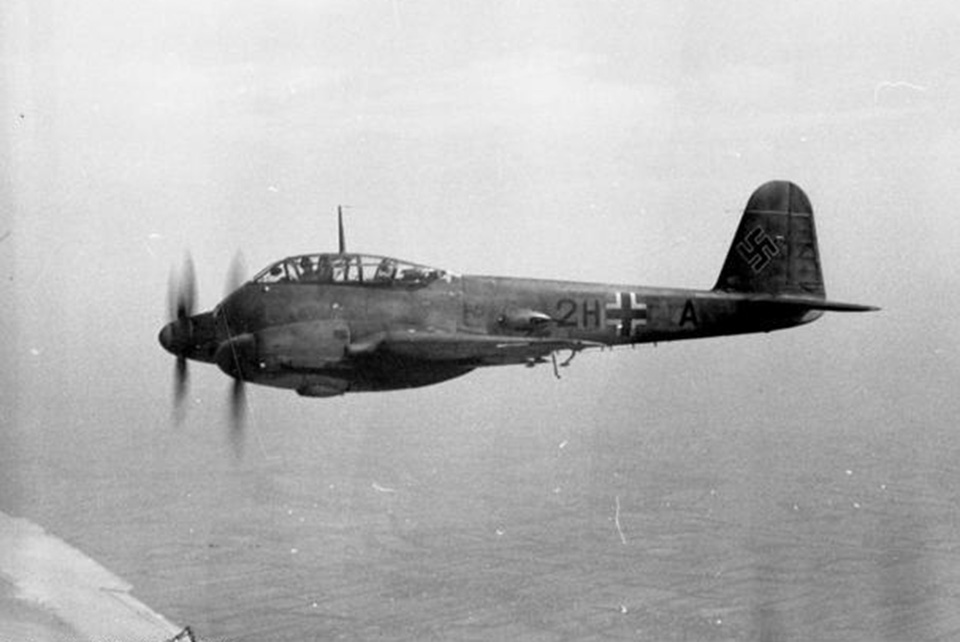
The new plane was intended to be more versatile than the Me- 110, for it was envisioned as a high-speed dive bomber, a reconnaissance aircraft and a medium-range heavy fighter. Its most advanced feature was an extremely complicated remote-controlled rear armament system. The Me-210 proved to be dangerously unstable during its first flight on September 2, 1939—the day after Adolf Hitler invaded Poland—and the pilot had to feather an engine. Among many quick fixes, a meter-long extension was added to the fuselage and later a large single rear fin replaced the twin rudders. Testing continued, with the necessary lead-time parts being secured for mass production.
Speed record–setting test pilot Fritz Wendel was forced to bail out of a prototype on September 5, 1940, when its horizontal stabilizer failed in a dive. A long series of modifications followed, spurred on by the discovery that the Me-210 had a vicious stall in a steep bank. Further problems were discovered when an operational training unit used the preproduction aircraft in combat on the Eastern Front. While the pilots of the test unit considered the aircraft equal to or better than the Me-110 in most respects, they reported that in a nose-high attitude the Me-210 could suddenly stall or spin without warning. (Ironically, the famous Messerschmitt leading edge slats, which had been specifically forbidden in the design by the Luftwaffe, later proved to be the cure for this problem.) There were many other problems, including engines breaking away from the aircraft in flight and a dangerous tendency to turn over on its back on landing.
The situation drove the already harried and drug-bedeviled Udet first into an ugly confrontation with Messerschmitt and then to suicide. Mass production of the Me-210 was already well underway by that time, and Udet’s successor, Field Marshal Erhard Milch, was under Hitler’s orders to vastly increase aircraft production.
A top-level decision to cancel the program in the spring of 1942 was reversed, and further testing ensued. These test results indicated that the aircraft, as then modified and configured, was suitable for operations. That this view persisted in spite of the Me-210’s very high accident rate shows how desperate the Luftwaffe had become.
In the end, the highly modified Me-210 morphed into the very successful Messerschmitt Me-410, equipped with the much better performing Daimler-Benz DB 603A engines rather than DB 601Fs. About 200 Me-210s had been delivered, another 370 were being assembled and parts for a further 800 were being prepared when the official cancellation finally came. Thus at least 600 badly needed aircraft were lost to the Luftwaffe, while the Messerschmitt firm took an estimated 30 million Reichsmark hit. Milch, out of revenge as much as frustration, demanded that his old enemy Willy Messerschmitt be removed from his decision-making posts at Messerschmitt.
GET HISTORY’S GREATEST TALES—RIGHT IN YOUR INBOX
Subscribe to our HistoryNet Now! newsletter for the best of the past, delivered every Monday and Thursday.
Fairey Battle
It is perhaps unfair to include the handsome Fairey Battle in this collection, since it was a very advanced aircraft for its time. It’s listed here primarily as an indictment of the benighted thinking of the Royal Air Force, which sent men into combat in a plane known to be a deathtrap.
The RAF had suffered such devastating losses providing close air support during World War I that it failed to develop an adequate aircraft for the role in the postwar years. At a time when the Luftwaffe was developing the Junkers Ju-87 dive bomber, the RAF opted for a “light bomber,” i.e., a 200-mph aircraft with a 1,000-pound bomb load and an armament package consisting of a single .303-inch Browning firing forward and a Vickers of the same caliber on a flexible mount in the rear cockpit.
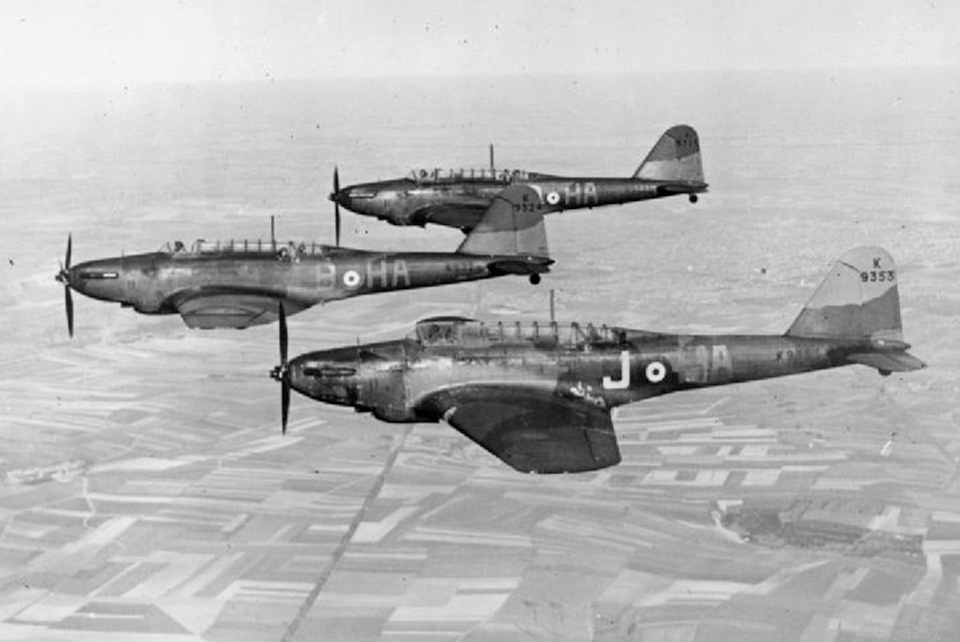
The specification for the Battle, a low-wing cantilever three-seat (pilot, bombardier, radio operator/gunner) monoplane, was issued in 1932. Delays in engine development postponed its first flight until March 10, 1936, when there was a perceived need for mass production.
The Battle looked like and shared the characteristics of many cutting-edge aircraft of its era, particularly the 1932 Consolidated P-30/PB-2 two-seater of 1932. Fairey’s foresight in placing the very first order for Rolls-Royce Merlin engines endowed the aircraft with the comparatively high speed of 257 mph at 20,000 feet. Unfortunately, the Battle was to enter combat at low altitudes, where its speed was reduced to about 210 mph, some 125 mph less than the Messerschmitt fighters it would encounter.
On the plus side, the Battle was easy to fly. The initial order for 155 aircraft was soon followed by more, to be built in the new “shadow-factory” system established in March 1936, which allowed private companies to operate government-owned factories. Ultimately more than 2,200 Battles were built, doing their most useful work as trainers, target tugs, squadron hacks and engine test-beds.
One of the factors that induced the British government to continue manufacturing an aircraft already known to be obsolete was the need to keep production lines going, with workers in place, for later and more advanced weapons. The same situation occurred in the United States on more than one occasion, as with the production of the Vultee Vengeance series of bombers. The Battle’s obsolescence made it available for sale to other governments, and some were delivered to Belgium, Turkey and South Africa. About half the Battles built were constructed in Canada or Australia, and used by their respective air forces.
The real tragedy was that 160 Battles, despite their obvious vulnerability, were sent to France as a part of the Advanced Air Striking Force. They prospered at first, and a Battle gunner scored the first RAF aerial victory of the war, shooting down an Me-109. The handsome but tired Fairey monoplane was soon to meet its doom, however. When the Germans knifed into France during their historic May 1940 offensive, Battles were committed to low-level attacks. Of the first 32 put into action, 13 were shot down and almost all the rest were damaged. The following day seven out of eight Battles were destroyed trying to stem the German tide. On May 12, in an attack against bridges over the Albert Canal, all five participating Battles were shot down. There was more bad news to come.
When the Germans reached Sedan, the site of their famous victory in 1871, 63 Battles were thrown into the breach. Of these, 35 were shot down and the remaining 28 suffered damage. Mercifully, the continued loss of airfields to the Germans forced the remaining Battles to return to Great Britain. They flew their last operational sorties in October 1940, against German-occupied French ports.
Oddly enough, given the Battle’s dismal combat history, a smaller, redesigned version of the aircraft, the Fairey Fulmar, proved to be an effective Fleet Air Arm fighter in the Mediterranean.
Recommended for you
Convair 880 & 990
There are some instances in the commercial marketplace when a manufacturer puts a perfectly good airplane into production only to find there is no place for it because of the competition. Take the case of the wide-body Lockheed L-1011 and the Douglas (later McDonnell Douglas) DC-10, both of which were good aircraft, but the total market for that type was forecast to be about 1,500 airplanes. Both companies needed to sell about 750 planes just to reach the break-even point, making it very difficult for either to achieve a profit. Furthermore, both firms were confronted with a surprising amount of competition from the larger Boeing 747 even as they encountered insurmountable problems. Douglas faced terrible management and production difficulties that would lead to its later merger with McDonnell, while Lockheed ran into an engine dilemma with Rolls-Royce that almost bankrupted the firm.
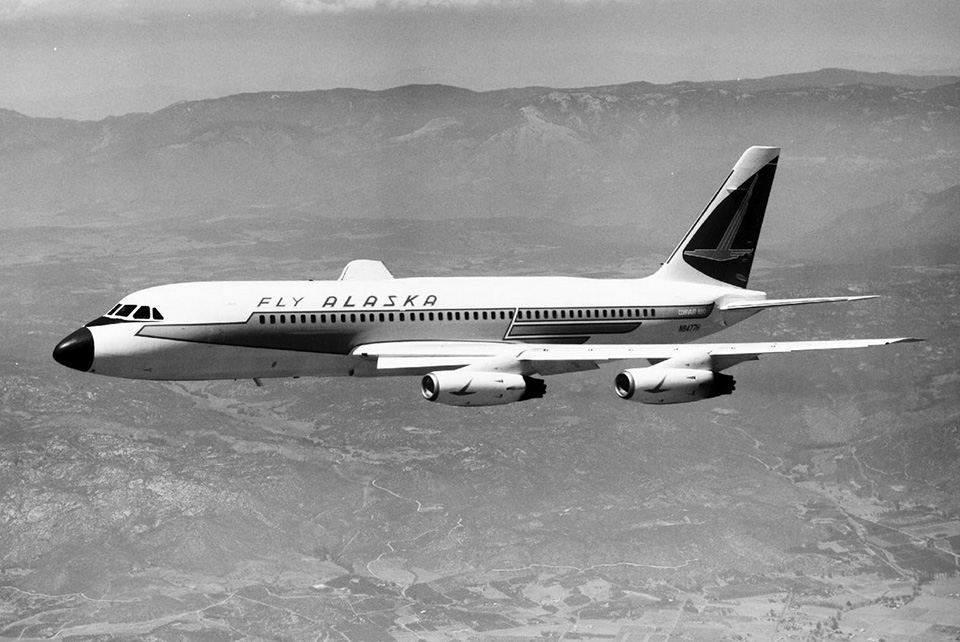
A similar no-win situation applied to the fast, beautiful Convair 880 and 990 series. They were brought into being because Convair management agreed with Howard Hughes, a major stockholder in TWA, that their higher speeds would sell. Unfortunately, they ran into the triple whammy of Boeing, Douglas and rising fuel costs.
Convair’s military business was good, with a flow of F-102 and F-106 fighters supplemented by the beautiful B-58 Hustler bomber. It had made profits with its line of Convair 240, 340 and 440 piston engine transports. These served airlines well, and had the T-29 and C-131 military derivatives to add to the bottom line. Convair tiptoed into the jet passenger liner world with turboprop conversions of its earlier aircraft, including the 540 Cosmopolitan. It was natural to wish to compete with Boeing and Douglas in the age of jet transports. Natural—but not very wise, as Boeing was in a position to meet the new competition with variations of the 707, and introduced the 720 and later the 727 to do just that.
Convair elected to use a civilian version of the General Electric J79 engine that powered the B-58. It created a very sleek-looking transport with a narrow fuselage that accommodated 80 to 124 passengers, seated four abreast in first class and five abreast in tourist class. The narrow fuselage created less drag but resulted in limited capacity.
Thirty orders were received from TWA and 10 from Delta Air Lines, and the Convair 880 (the designation derived from converting the cruising speed to feet per second) made its first flight on January 27, 1959. Testing confirmed that the aircraft was fast enough to be advertised as “the fastest airliner in the world,” but it almost crashed when high-speed flutter tore off a large portion of its vertical fin and rudder. The test pilots landed safely at Edwards Air Force Base, and production aircraft were modified to correct the problem.
Sales did not meet expectations, and a financial catastrophe loomed for Convair. The firm tried to modify the 880 to meet the demands of different airlines, but in the end only 65 were sold.
Convair attempted to meet the Boeing 720 with a modified version of the 880, eventually calling it the 990. The 990 was intended to have a cruise speed of Mach .91, or about 635 mph. Flirting with near-supersonic speeds caused unexpected drag problems. Discussions with Richard Whitcomb of NACA on his area rule theories led to a solution involving the use of antishock bodies known as “speed pods,” two of which were placed on each wing. The speed pods added to the already classy looks of the Convair airliner, but they were nonetheless an engineering lash-up. They required the structure to be strengthened and a larger vertical surface to be installed. Instead of a modification, the 990 turned out to be almost a new design.
Thirty-seven 990s were delivered, and they saw extensive use around the world by a number of airlines. High fuel costs inhibited their use, however, and most were retired after only a few years of service. Over the years, approximately 30 different airlines used Convairs. In that time they were involved in no less than 17 crashes and five hijackings.
Of the 102 Convair 880s and 990s built, only a few survive today. One 880, purchased by Elvis Presley and christened Lisa Marie, can still be seen near Graceland. Another example became a tanker, a third a restaurant and a fourth a strip club. A handsome 990 is part of the Swiss Transport Museum collection in Lucerne.
For Convair, the program was a $425 million disaster, the largest loss up to that time in business history, and the end of its interest in commercial aviation.
Brewster F2A Buffalo
Many will protest the inclusion of the Brewster Buffalo in a list of aircraft that should not have gone into production, contending that in the hands of Finnish pilots it did splendid work against the Soviet air force. But as test pilot Eric Brown has said, “the climate and the opposition” must have favored the Buffalo. The climate was below-zero cold much of the time, and the “opposition” leadership had been decimated by Josef Stalin’s insane purges from 1937 on.
In fact, the Buffalo’s inclusion in this list is not so much a complaint about the airplane as it is about the abominable management of the firm, which not only built bad aircraft of its own design, but also fouled up production of the magnificent Chance Vought F4U Corsair, built under the F3A-1 designation. Conditions at the plant were so terrible that even some Brewster workers called for government intervention, which came about in April 1942.
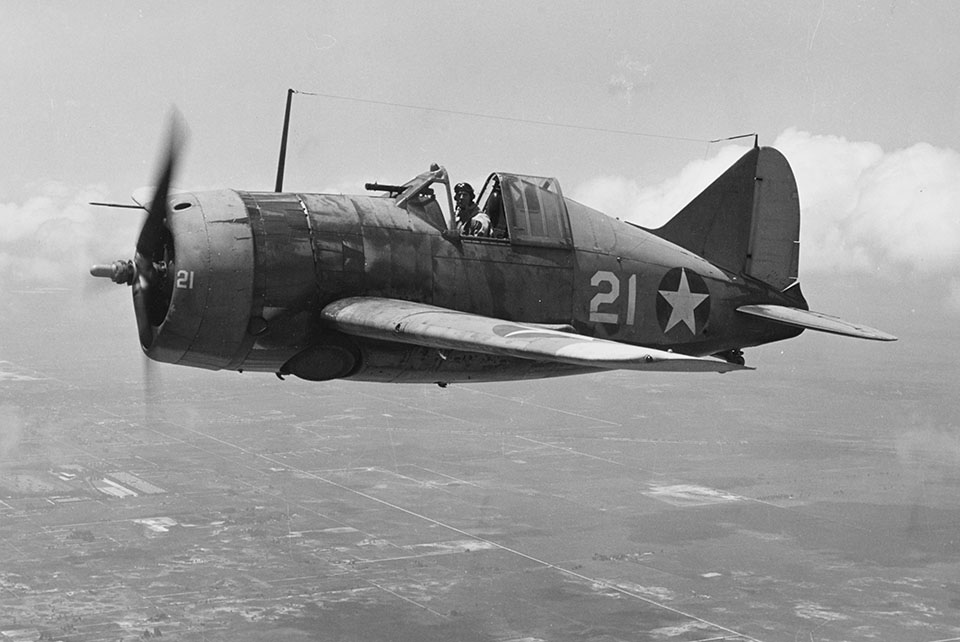
Working in a ramshackle factory in Queens, the Brewster firm had produced a design for the XSBA-1 scout bomber in 1936. A midwing monoplane with retractable landing gear, it was quite advanced for the time, and 30 examples were built at the Naval Aircraft Factory in Philadelphia. By now determined to enter the monoplane fighter age, the U.S. Navy let a contract to the Brewster Aeronautical Corporation on June 22, 1936, for the XF2A-1. The stubby little fighter, which looked like a scaled-down XSBA-1, made its first flight on December 2, 1937.
A competition ensued between the Brewster, the Seversky XFN-1— a navalized version of the P-35—and the Grumman XF4F-2, which became the immortal Wildcat. Seversky’s entry was quickly ruled out as too slow. The Navy decided in June 1938 that the Brewster, although 10 mph slower than the 290-mph XF4F-2, was more satisfactory, and ordered 54 aircraft.
Eleven of the Brewsters began entering Navy service in 1940 as its first operational monoplane fighter. The remaining 43 aircraft on the initial order were declared surplus and sold to Finland, where they gave good service in what the Finns called the “Continuation War.” The Navy placed an additional order for 43 F2A-2s with the more powerful 1,200-hp version of the original 950-hp Wright R-1820 engine. Another 108 aircraft were ordered as F2A-3s in 1941, with the primary purpose of keeping the production line in operation—an error in judgment by the Navy.
The Brewsters were also purchased by the Netherlands (70), Belgium (40) and Great Britain (170). The RAF nicknamed it the Buffalo, and finding it unsuited for combat in Europe, dispatched the Brewsters to Malaya to equip five squadrons of the RAF, Royal Australian Air Force and Royal New Zealand Air Force. The Japanese made quick work of these, with a few survivors going on to fly in the defense of Burma. The Dutch had more success with their Buffalos, one of which managed to sink a Japanese destroyer with 100-pound bombs.
But it was at the Battle of Midway that Brewster Buffalos were the most costly. When the Japanese attack began, it was met by Marine fighter squadron VMF-221, employing 20 Buffalos and seven Grumman F4Fs. The Zeroes slaughtered the F2A-3s, resulting in 12 Buffalo pilots missing in action, one killed and two wounded. The Buffalo did not engage in combat again for the United States.
Ironically, the greatest service the Brewster Buffalo provided the United States was the data gleaned in a full-scale wind tunnel analysis by NACA at Langley Field. Within five days, the NACA team discovered a series of small drag-inducing problems that, when cleaned up, added 10 percent to the aircraft’s speed. In the following months, NACA applied the same analysis to no fewer than 18 military prototypes, including the Buffalo’s arch—and most successful—rival: the Grumman Wildcat.
Heinkel He-177
The Heinkel He-177 was so bad that the Luftwaffe’s official name for it, Greif (meaning Griffon, but in this case standing for Grief), was even more appropriate than its unofficial name of Luftwaffenfeurzeug, or “Luftwaffe’s Lighter.” The second nickname stemmed from the aircraft’s unfortunate habit of bursting into flame, while the first characterized the whole sad program—from the bureaucratic meddling of its beginning to the facts-of-life conditions of its end.
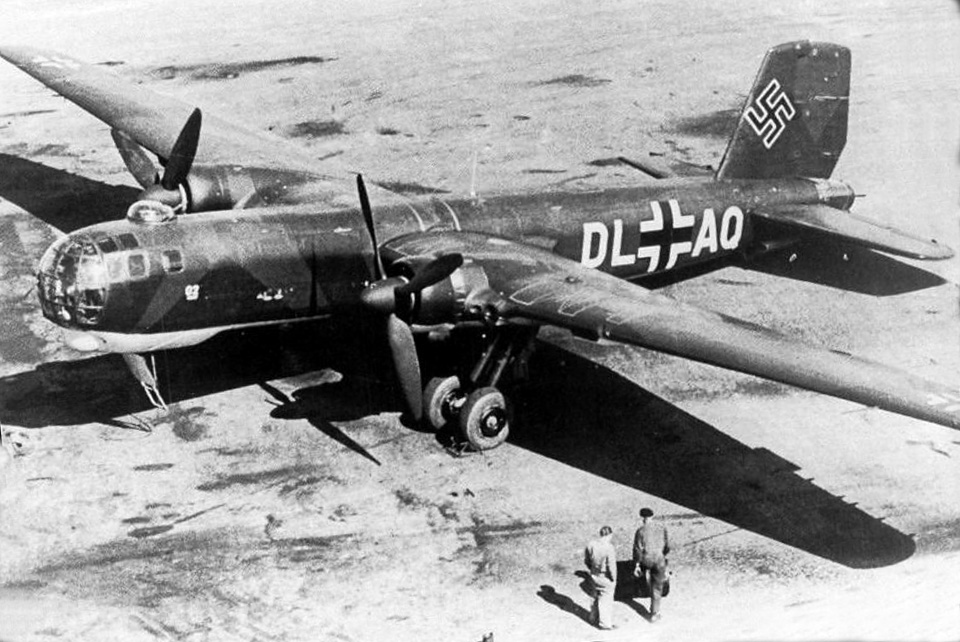
Curiously enough, the airplane itself was a cleverly designed solution to Germany’s needs for a long-range heavy bomber and an antishipping weapon. One German He-177 pilot claimed that a well-maintained Greif was a potent aircraft that was pleasant to fly, and could be successfully operated from auxiliary fields even late in the war.
Unfortunately for the Luftwaffe, and especially for the many crewmen who died flying the He-177, the initial basic concept of a clean long-range bomber with coupled engines (two engines in one nacelle, both driving a single propeller) was brilliant. It was also essential, since the specifications called for a 335-mph aircraft with a 4,160- mile range carrying 2,000 pounds of bombs, and no conventional layout seemed capable of that.
Enter the masterminds of the Luftwaffe’s senior hierarchy. If the Junkers Ju-87 was so successful at dive bombing, why shouldn’t the Heinkel He-177 fare equally well? So they also insisted that the aircraft have the structural strength to make medium-angle diving attacks. Other advanced features included that elusive dream of aerodynamicists, surface evaporation cooling, and remotely controlled gun turrets.
The He-177’s most radical design feature was its coupled power plants. The 2,700-hp Daimler Benz DB 606 24-cylinder liquid-cooled engines were basically two 12-cylinder DB 601s positioned side by side with two crankshafts driving a single propeller shaft gear. In theory this arrangement produces less drag and improves maneuverability. Furthermore, the DB 601 engines were proven and in production.
Heinkel was trying for too much too soon. Evaporative cooling had to be abandoned in favor of conventional radiators, and manned gun turrets proved necessary. This meant more fuel would be required for the same level of performance. These and other changes drove the plane’s weight up and its performance down, while eroding the design’s structural integrity.
Then the bureaucratic coup de grace came with a demand that the aircraft be “Stukafied” with 60-degree dive bombing capability. This forced a radical redesign, including incorporation of a cumbersome system of four single-wheel oleo legs that retracted in the manner of a yoga class of stout elderly people doing squat-thrusts. The accompanying weight increases brought on the customary weight-saving measures, one of which called for the elimination of engine firewalls to save a few pounds.
The He-177 situation was further clouded in the spring of 1939 when the young and fast-rising but apparently dimwitted Luftwaffe chief of staff, Maj. Gen. Hans Jeschonnek, put the plane on the back burner in favor of medium bombers intended to frighten Great Britain enough to stay out of any war that Germany started. Times change, however, and the He-177 came back into favor again, with the program pushing forward despite numerous crashes and fires, many of the latter caused by the idiotic decision to remove the firewalls. The inner cylinder blocks of the adjacent 12-cylinder engines got so hot that they ignited any accumulated oil or grease in the bottom of the cowling. When a fire started there was nothing to prevent it from quickly spreading to the fuel and oil lines, with catastrophic results.
But there was no other heavy bomber at hand, and the Luftwaffe continued to build slower, heavier versions for operational use. By the end of 1943, some 260 He-177s had been completed (about half a month’s production of the B-24 at its peak).
Pilots found the aircraft performed well enough, although it was tricky on takeoff and landing. It was used on the Russian Front, and miserably misused as a transport to get supplies to surrounded Stalingrad. It performed reasonably well in its antishipping role, but was to have its greatest moment in Operation Steinbock, Hitler’s feeble attempt to pay back the Allied air raids with another attack on London. Some 550 bombers were gathered together, including 35 Heinkel He-177s, for sorties against London in January 1944. The operation was a total failure, but the He-177s’ speed gave them an advantage that partially offset their shortcomings. Just as the He-177s seemed to have almost enough numbers and sufficient reliability to become a potent force, Germany ran short on aviation fuel, and heavy bomber operations were curtailed. He-177s were sprinkled around Germany on airfields to become targets for marauding P-47s, and they did their last Luftwaffe lighting on the ground.
Curtiss C-76 Caravan
Every nation assumed it would run short of aluminum during World War II, and took steps to find alternate solutions. The British arguably did the best with the magnificent de Havilland Mosquito. The Soviet Union found ways to incorporate wood construction into many of its aircraft until the last years of the war. Germany sought to emulate the Mosquito with its Moskito, the Focke Wulf Ta-154, and might have succeeded had its Goldmann Tego-Film glue plant not been destroyed, with no adequate adhesive substitute available.
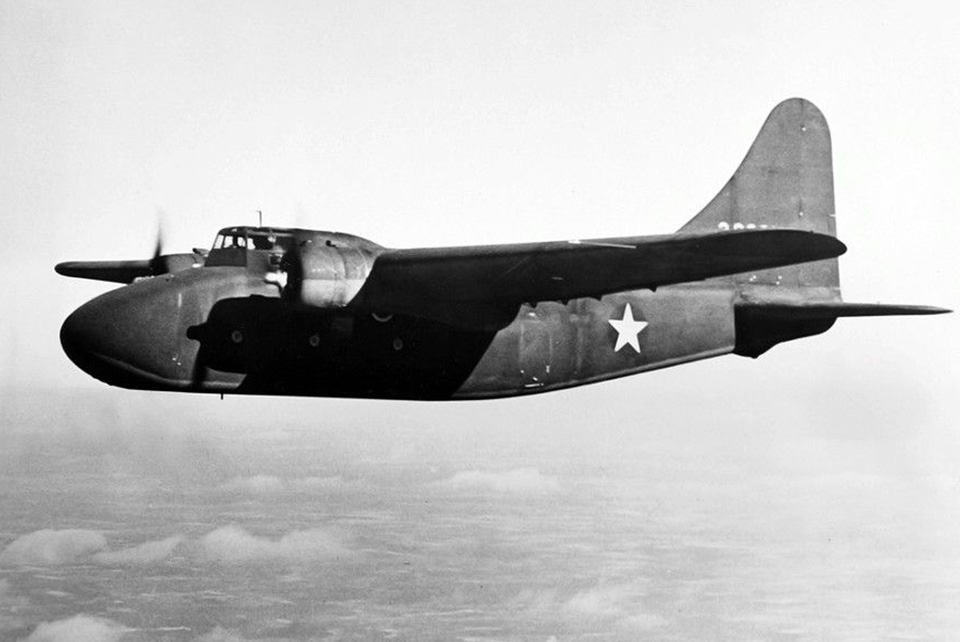
In the United States several manufacturers, particularly Fairchild, used molded wood products to good effect, and Curtiss decided to build an all-wood twin-engine transport at a new plant in Louisville, Ky. An initial order for 200 was to be followed by mass production in a plant the famous Higgins PT-boat firm planned to build in New Orleans.
Designated the Curtiss C-76, the transport presaged later aircraft with tricycle landing gear and a hinge-up nose as well as conventional side-loading doors. Designed to accommodate a crew of three and as many as 45 troops (some accounts say 23), the aircraft was intended to have a maximum speed of 192 mph and a range of 750 miles.
Unfortunately for Curtiss, woodworkers were hard to find, and despite years of wood and fabric work, the task of building an all-wood aircraft seemed beyond the capability of its engineers. The C-76 became so overweight that it proved impossible to carry any load without exceeding the center-of-gravity limitations. Five were built in the St. Louis plant and 20 in Louisville before their utterly disappointing performance—and the decline in worries about the shortage of aluminum—put an end to the whole dismal affair. Perhaps the saddest thing about the C-76 was the penumbra of doom it forecast for Curtiss, as an aircraft manufacturer that had clearly lost its grasp on the discipline.
Boulton Paul Defiant
There are some aviation problems that are—or should be— obvious upon inspection. One of these was the inane concept of turning a modern fighter into a “ship of the line” by equipping it with four guns mounted in a turret and requiring a gunner. The idea was that the turret-equipped fighter would fly parallel to enemy bomber formations and hose them from the sky.
The RAF had done a wonderful job in nurturing a relatively large number of small companies through the Depression years, sustaining them with tiny contracts for a few aircraft and often subcontracting to them the production of aircraft from larger firms. When Britain at last realized that it must rearm with thousands of planes, the RAF was faced with moving the small companies from building a few aircraft per year to turning them out by the thousands.
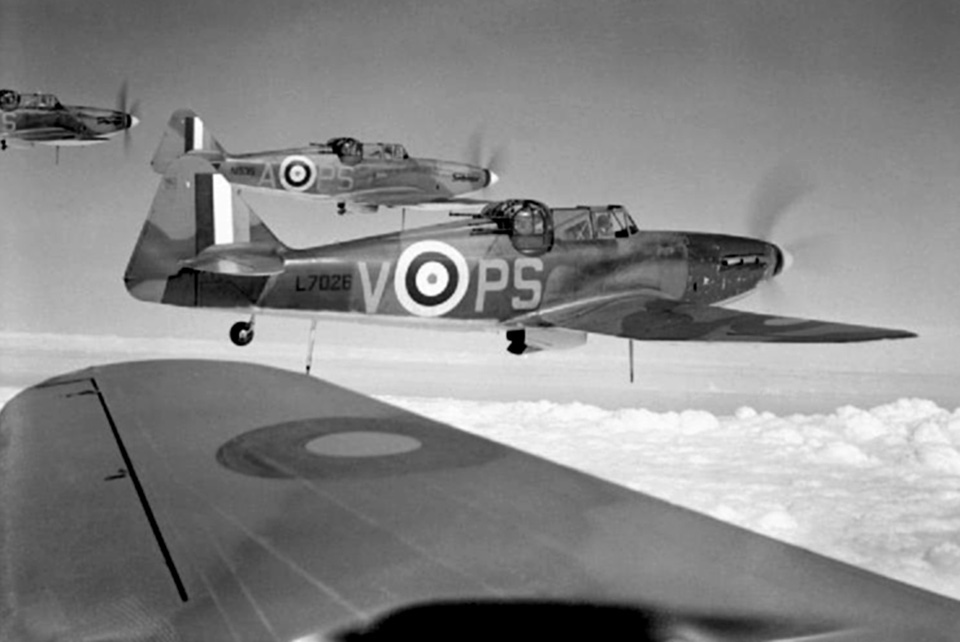
As a result, rather fanciful specifications were sometimes included in contracts. Thus in 1935 a contract was let to Boulton Paul to build single-engine fighter with performance comparable to contemporary fighters such as the Supermarine Spitfire and Hawker Hurricane. And drawing on its experience with the Hawker Hector biplane, which had carried a four-gun Frazer-Nash turret, the RAF specified there would be no forward-firing armament. Instead, the aircraft would mount a turret. This suited Boulton Paul, which had pioneered the use of a pneumatic powered gun turret in its Overstrand bomber of 1934. The firm purchased the rights to a French-designed electro-hydraulic turret and became a leader in the field.
The prototype Defiant made its maiden flight on August 11, 1937, but the first production plane didn’t fly until July 30, 1939, as considerable design and manufacturing difficulties cropped up along the way. There was no way the Defiant could offer the performance of the Spitfire or the Hurricane, as it was larger and heavier, with more drag—but it topped 304 mph and was pleasant to fly.
The Defiant went into combat on May 12, 1940, with great success. By May 30, No. 264 Squadron claimed 65 victories. The Germans, believing they were attacking a conventional single-seat fighter equipped with forward-firing machine guns, would obligingly attack from the rear, running into the full fury of the four-gun Boulton Paul turret. Once the Germans caught on, however, they began attacking from the front. Given their superior performance, Me-109Es made short work of the hapless Defiants, which were soon withdrawn from daylight operations.
The RAF needed night fighters, however, and the Defiant proved to be an adequate interim aircraft for that task, obtaining the highest ratios of kills to interceptions during the winter of 1940-41. It was replaced by more advanced types, however, and then relegated to mundane tasks such as towing targets.
For further reading, Aviation History contributing editor Walter J. Boyne recommends: Warplanes of the Third Reich, by William Green; Messerschmitt Me 210-Me 410 Hornet, by Peter Petrick and Werner Stovker; and Fairey Aircraft Since 1915, by H.A. Taylor.


